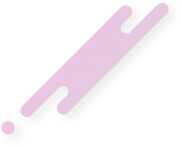Grievance procedure for a non-unionised organisation








Policy
The purpose of this policy is to provide employees with a readily accessible procedure for addressing any problems or concerns they may have at work. This procedure should not replace normal employee–manager dialogue. However, where such informal dialogue has failed to resolve an issue of concern, then an employee may utilise this procedure in an effort to have an issue resolved to his/her satisfaction.
It is accepted that when people work together there will inevitably be situations where misunderstandings, problems or concerns need to be resolved. It is the policy of the Company that a culture of good communication, openness and a willingness to co-operate and listen will exist. Therefore, it is envisaged that the majority of these issues or misunderstandings will be capable of being addressed informally in an efficient and effective manner. However, where such issues are unresolved they may become grievances. Employees are encouraged to seek resolution of an issue by utilising this procedure.
At each grievance meeting held under the formal procedure, the employee has a right to be accompanied by a colleague or a trade union official.
The grievance procedure should not be used to lodge appeals against disciplinary sanctions. The Company’s disciplinary procedure contains sufficient mechanism for dealing with an employee’s dissatisfaction at a disciplinary sanction applied to them.
The Company reserves the right to engage external third party assistance at any stage of the grievance process. In addition, a representative from the Company’s HR department will be present at all formal grievance hearings.
This procedure does not constitute contractual terms and conditions. The Company reserves the right to amend any provision of this procedure subsequent to appropriate consultation.
Acas Code of Practice: Disciplinary and Grievance Procedures
This policy fully incorporates the provisions of the Acas code.
Procedure
In order to provide an effective and timely resolution of employee concerns, the following procedure will be followed to ensure that employee complaints or problems receive full and careful attention.
Reasonable adjustments will be made to the procedure for disabled employees. Any employee who experiences difficulty with the procedure for any reason should seek assistance from the HR department.
Informal discussion
Employees are encouraged to approach their line manager in the first instance to discuss issues and attempt to informally resolve them. Informal discussion can frequently solve problems without the need for written record. Employees will receive an outcome within [insert number] days.
If an employee is dissatisfied with the outcome, they may invoke the formal grievance procedure.
Formal procedure Stage one
The employee should raise the grievance in writing with their line manager. This should explain the nature and extent of the grievance and indicate the outcome the employee is looking for.
If the employee’s grievance relates to concerns regarding their line manager, the employee may enter the procedure directly at stage two.
If the nature of the employee’s grievance is such that the employee would not feel comfortable raising it with their line manager due to the proximity in which they work, the employee may enter the procedure directly at stage two. Stage two can also be used as the starting point where allegations of bullying or discrimination involve the employee’s line manager.
Concerns regarding any matter which would fall within the scope of legislation on public interest disclosures (otherwise known as whistleblowing) must be raised directly using stage three of the procedure.
Under stage one, a meeting will be arranged between the line manager and the employee. A minute taker will also be present. The employee may be accompanied by a fellow colleague or trade union official. The meeting will be held to discuss the grievance in detail and the employee should take any documents or evidence they have regarding the grievance to the meeting.
The line manager will complete a full investigation in to the matter. This may involve holding investigation meetings with witnesses, requiring witness statements to be produced and reviewing written evidence. A decision will be taken by the line manager following the investigation and the grievance will be responded to, in writing, within [insert number] working days of the meeting being held. The employee will be informed of actions to take if they wish to appeal the outcome.
Minutes of the meeting will be taken and copies will be made available to the employee. A copy of the minutes will be stored by the HR department.
Stage two
The matter will progress to be heard by a senior manager in place of the line manager if the employee is not satisfied with the outcome of stage one. The employee should write to the senior manager setting out the reasons for their dissatisfaction. Stage two will involve the same procedural steps as stage one, and the outcome will be provided to the employee within [insert number] days of the hearing. The hearing will be held by the senior manager. The employee will be informed of actions to take if they wish to appeal the outcome.
Stage three
The matter will progress to be heard by a Director in place of the senior manager if the employee is not satisfied with the outcome of stage two. The employee should write to the Director setting out the reasons for their dissatisfaction. Stage three will involve the same procedural steps as stage two, and the outcome will be provided to the employee within [insert number] days of the hearing. The hearing will be held by the Director.
There will be no further appeal after stage three. The Director’s decision on the grievance will be final.
Simultaneous grievance and disciplinary matters
The Company will make a decision on how to progress matters when an employee raises a grievance about a disciplinary procedure involving them. Acas guidance suggests that disciplinary hearings may be suspended for a short duration while the grievance is investigated. The Company will assess the exact nature of the grievance and will have the final say over suspension of a disciplinary procedure.
Extending timescales under the procedure
The timescales outlined in this procedure will be adhered to whenever this is reasonably practicable. There may be extenuating circumstances that are outside of either parties’ control, for example, where a key witness is unavailable or the grievance requires extensive investigation.
Where it is not reasonably practicable to adhere to the deadlines, both parties will discuss and agree any extension to the timelines.
Mediation
The Company reserve the right to seek assistance from external mediators at any stage in the grievance procedure. Where both parties agree to undertake mediation, the grievance process will be suspended whilst this is ongoing.
Protection against detriment
Nothing in this procedure is intended to prevent the employee from raising any concerns they have. Employees who raise concerns under this procedure will not be subject to any detrimental or less favourable treatment as a result of doing so.
Where the grievance is made with malicious intent, the employee will be subject to the Company’s disciplinary procedure.
Last updated: [insert date]
Date of next review: [insert date]